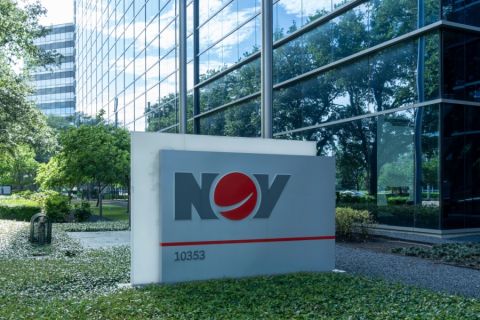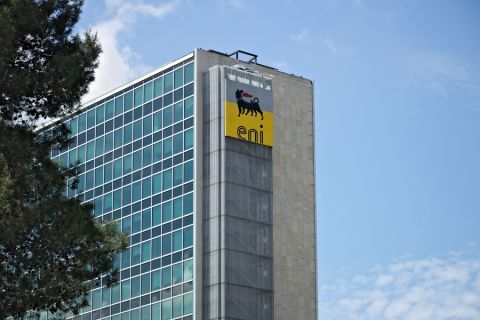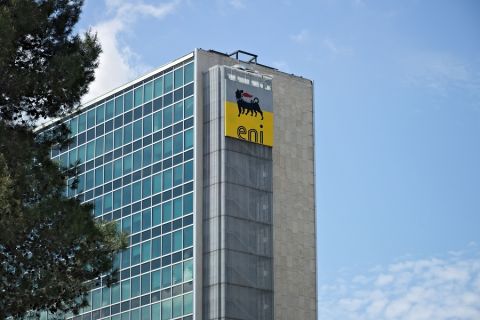Spain’s Repsol has detailed an ambitious exploration and appraisal programme for 2014 that will span both sides of the Atlantic Margin, and feature deepwater wells to be drilled offshore West Africa, the Gulf of Mexico, and in Latin America.
Extensive seismic data gathering programmes are also planned as part of a focused strategy to target potential high growth areas. In the western Caribbean offshore Colombia, the Spanish player will be a partner on one high-profile well in the Tayrona Offshore block. The Orca-1 well will be drilled in a water depth of 674 m (2,210 ft) to a planned Total Depth of 4,775 m (15,662 ft), with Repsol holding 30% equity in the probe. Block operator Petrobras is due to move a rig from Brazil to drill the well, which is most likely to happen during the second quarter, DI understands.
Orca-1 is a large four-way prospect, with almost 500 sq km (193 sq miles) of lower Miocene horizon, and the prospect consists of Oligocene Miocene carbonates. Petrobras has a 40% stake, with Ecopetrol holding the other 30%. The chances of geological success are put at 26%, with estimated resources of 4 Tcf. Repsol farmed into Tayrona in 2011.
By the end of this month, Repsol is also due to complete acquisition of 6,000 km (3,750 miles) of 2-D seismic data also in the western Caribbean region, and it has issued a single tender for the acquisition of a further 5,000 sq km of new 3-D data, which is to be recorded by December. The expectation is that it will generate between three to five prospects for drilling between 2015 and 2018.
AFRICA
In Africa, meanwhile, Repsol is this year planning to participate in six wells: two offshore Liberia, three off Angola, and one off Namibia. In block LB 10 off Liberia, two deepwater wells are planned for the second quarter of this year. The block encompasses 2,580 sq km (995 sq. miles) and is operated by Anadarko with 80%, with Repsol and Mitsubishi each holding 10%. Africa Petroleum drilled two wells in 2011 and 2012 which resulted in the Narina-1 and Bee Eater discoveries. Chevron already has plans for drilling in the area this year.
In Angola, Repsol has commitments across three blocks: In deepwater B35/11 operated by Eni with 30%, where Repsol holds 25%, and Sonangol 45%, a total of 4,820 sq km (1,860 sq miles) of 3-D seismic data was acquired by TGS. Pre-stack depth migration (PDSM) data was delivered to license partners in November 2013. After contracting the Ocean Poseidon rig, a well was spudded on 20 January on the Ombovo-1 prospect. Work obligations are for three pre-salt wells by the end of 2019.
In B37/11, operated by COP with 20% and where Sonangol holds 30% and Repsol 20%, a total of 3,300 sq. km (1,273 sq miles) of seismic data was delivered in December 2013. Ocean Rig’s newbuild Athena unit has been contracted to spud a well there late in the third quarter on the Crux prospect. Again, work commitments involve two pre-salt wells by the end of 2016, and another by the end of 2019.
And in B22/11, operated by Repsol with 30%, a total of 4,820 sq. km (1,860 sq miles) of seismic was acquired by CGG and PDSM data was delivered last November. The newbuild Rowan Renaissance drillship, delivered at the end of January, is expected to start drilling there late in the third quarter. Awarded in December 2012, Sonangol holds 50%, and Statoil 20% in this block. Three prospects have been identified – Catchimanha, Losengue and Locosso. Again, two pre-salt wells are due by the end of 2016, and one further well by 2019.
Offshore Namibia, Repsol is preparing to drill in the 11,627 sq km (4,491 sq mile) PEL 0010 licence also using the Rowan Renaissance drillship in the second quarter of this year. Repsol says offshore Namibia embodies its desire to increase Atlantic margin exploration in a high potential area. A first deepwater exploration well, Welwitschia-1, will target up to 496 MMboe in the Delta structure. The well will be drilled in about 1,000 m (3,300 ft) of water, with the licence containing more than 1,000 sq km (386 sq miles) of closure. Other designated structures, Alpha, Beta and Gamma offer follow-up potential, it added.
However the Tapir South 1 discovery, drilled offshore Namibia by Chariot last year in a water depth of 2,134 m (7,000 ft) is not considered to be an analogue, because it has a different hydrocarbon-sourcing mechanism and trap type, Repsol indicates. Other recently drilled wells in the Walvis Basin area operated by HRT – Wingat-1 in a water depth of 1,005 m (3,300 ft), and Murombe-1 which encountered the same source rock as the Wingat 1 well – both confirmed source rock within the oil window, Repsol says.
CANADA
Offshore Canada, Repsol indicates the Statoil-operated Bay du Nord discovery could be between 300–600 MMboe, as previously indicated by DI. This find in exploration licenses EL 1125 and EL 1126 is south of the Harpoon discovery which is still being assessed, and the 100-200 MMboe Mizzen find. Statoil operates these licenses with a 50% stake, with Repsol holding 10% and Chevron 40%. Both lie over a 1,000 m (3,280 ft) depth contour.
Also offshore Canada, in the third quarter Repsol will participate in the Aster well, seen as an analogue to the Hibernia and White Rose fields. Repsol has a 25% stake in license EL1110, operated by Husky with 40%, and where Suncor holds 40%. Aster is due to be drilled with the Henry Goodrich semisubmersible in a water depth of 560 m (12,836 ft), and will take up to an estimated 98 days to drill.
US GULF OF MEXICO
In the US Gulf Repsol has several drill-ready prospects, and is taking part in two current wells, one on the Leon prospect, a four-way closure in the Keathley Canyon Wilcox Trend, and an appraisal at the Chevron-operated Buckskin discovery.
Repsol’s operated Leon well was spudded by the Ensco DS 5 rig on 1 January this year, and earlier this month the unit was setting 22-inch casing in salt. Leon has structural similarities to previous discoveries such as Tiber, Phobos, Gila and Moccasin, and Buckskin drilled in 2008.
“It is located very close to all those discoveries, so in the case of another discovery we can have a lot of synergies from the development point of view with all the other discoveries in the area,” said Roberto Camusso, Repsol’s director of exploration for North America and Brazil, speaking at a Repsol exploration presentation in London recently.
Regarding the Leon well schedule, he said: “The idea is to TD mid-June, more or less, and then we will need to evaluate the result. So let’s say that late summer or end of summer, probably, we will be ready to announce the results.”
BRAZIL
Offshore Brazil, Repsol also mentioned the Petrobras-operated Sagitario discovery made last year, and which contained 31 degrees API oil in the ultra-deepwater Santos Basin. Well 1-SPS-98 (1-BRSA-1063-SPS) in block BMS-50 is west of the main pre-salt discoveries in the Santos Basin, and lies in 1,870 m (6,133 ft) of water. “It’s a classic pre-salt discovery with an excellent reservoir, [and] fantastic API,” Camusso commented. “During 2014, we will perform a DST [drillstem test] – we didn’t do any test here yet – and in 2015 we will be ready to drill the first appraisal,” he revealed.
RepsolSinopec is a 20% partner in this find, along with the UK’s BG Group. Petrobras is the operator with 60%. Petrobras reported the find on 26 February last year, with oil in a carbonate reservoir at 6,150 m (20,172 ft) below salt.
In Campos Basin block BMC 33 RepsolSinopec operates three discoveries – Seat, Gavea, and Pao de Acucar – which are thought to contain up to 1.2 Bboe. Repsol has 35% equity here, along with Statoil, with Petrobras holding 30%. “We are currently drilling Seat-II and Pão de Açucar-II,” Camuffo reported.
Another appraisal well is planned for Santos block 51, where Repsol will be participating with operator Petrobras in a well on the giant high-temperature, high pressure Libra field. “We are looking – or Petrobras is looking – for an appropriate rig to drill it. They mentioned to us that probably the rig will be available in the last quarter of 2014, so the idea is to drill this year,” Camuffo said.
EUROPE
Back in Europe, and following Exxon and OMV’s 3-5 Tcf Domino gas discovery in 2012, Repsol is partnering with Total and OMV in the Khan Asparuh block which covers 14,220 sq km (5,488 sq miles). Here the partners are planning to acquire nearly 8,000 sq km (3,088 sq miles) of 3-D seismic data covering about half the block. The rest will be covered with 3,000 km (1,875 miles) of 2-D data. “We’re looking for Oligocene potential, Oligocene source rock, maybe deep horizons in the Cretaceous. The proven play here is the Miocene,” said Max Torres, Repsol’s European and Middle East exploration director. “This is on trend with the nice discovery that Exxon has in the Romanian offshore.”
Recommended Reading
Keeping it Simple: Antero Stays on Profitable Course in 1Q
2024-04-26 - Bucking trend, Antero Resources posted a slight increase in natural gas production as other companies curtailed production.
NOV Announces $1B Repurchase Program, Ups Dividend
2024-04-26 - NOV expects to increase its quarterly cash dividend on its common stock by 50% to $0.075 per share from $0.05 per share.
Initiative Equity Partners Acquires Equity in Renewable Firm ArtIn Energy
2024-04-26 - Initiative Equity Partners is taking steps to accelerate deployment of renewable energy globally, including in North America.
Repsol to Drop Marcellus Rig in June
2024-04-26 - Spain’s Repsol plans to drop its Marcellus Shale rig in June and reduce capex in the play due to the current U.S. gas price environment, CEO Josu Jon Imaz told analysts during a quarterly webcast.
Ithaca Deal ‘Ticks All the Boxes,’ Eni’s CFO Says
2024-04-26 - Eni’s deal to acquire Ithaca Energy marks a “strategic move to significantly strengthen its presence” on the U.K. Continental Shelf and “ticks all of the boxes” for the Italian energy company.





